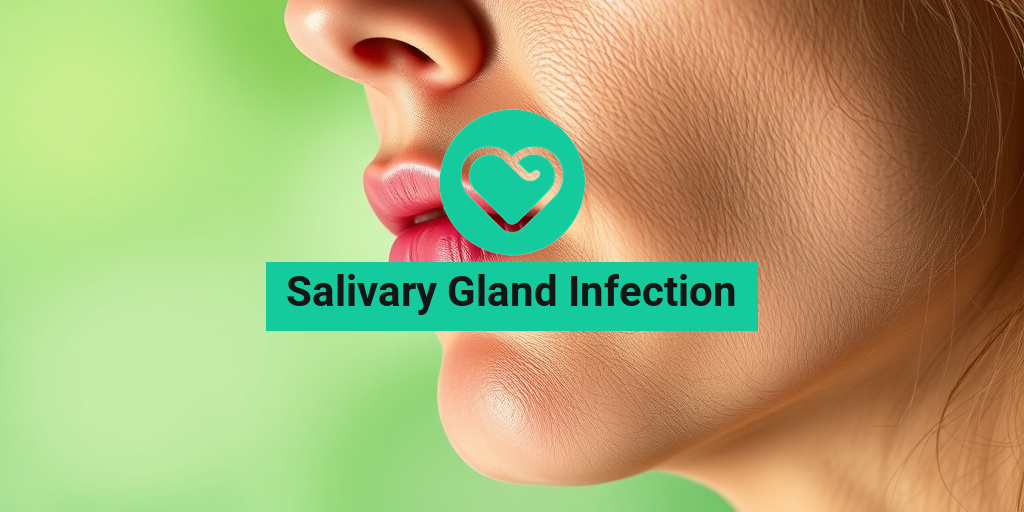What Is a Salivary Gland Infection?
A salivary gland infection, also known as sialadenitis, is an inflammation of one or more of the salivary glands. These glands are responsible for producing saliva, which plays a crucial role in digestion and oral health. The most commonly affected glands are the parotid glands, located near the jaw, and the submandibular glands, found beneath the jawline. When these glands become infected, it can lead to discomfort and various health issues.
Causes of Salivary Gland Infections
Salivary gland infections can arise from several factors, including:
- Bacterial Infections: The most common cause, often due to bacteria like Staphylococcus aureus.
- Viral Infections: Viruses such as mumps can lead to inflammation of the salivary glands.
- Dehydration: Insufficient saliva production can create an environment conducive to infection.
- Obstruction: Salivary stones can block the ducts, leading to swelling and infection.
- Autoimmune Conditions: Disorders like Sjögren’s syndrome can affect salivary gland function.
Who Is at Risk?
While anyone can develop a salivary gland infection, certain groups are more susceptible, including:
- Individuals with a history of dehydration or dry mouth.
- People with weakened immune systems.
- Those who have undergone surgery in the area of the salivary glands.
- Individuals with chronic illnesses that affect salivary gland function.
Salivary Gland Infection Symptoms
Recognizing the symptoms of a salivary gland infection is crucial for timely treatment. Common symptoms include:
Physical Symptoms
- Swelling: Noticeable swelling in the affected gland, which may be painful to touch.
- Pain: Discomfort or pain in the jaw, mouth, or neck area.
- Dry Mouth: A decrease in saliva production can lead to a dry mouth sensation.
- Foul Taste: An unpleasant taste in the mouth due to infection.
Systemic Symptoms
- Fever: A mild to moderate fever may accompany the infection.
- Fatigue: General feelings of tiredness or malaise.
- Difficulty Swallowing: Pain or discomfort while swallowing food or liquids.
When to Seek Medical Attention
If you experience symptoms of a salivary gland infection, it’s essential to consult a healthcare professional. Early diagnosis and treatment can prevent complications and promote faster recovery. Symptoms that warrant immediate medical attention include:
- Severe pain or swelling that does not improve.
- High fever or chills.
- Persistent dry mouth or difficulty swallowing.
For more detailed information on salivary gland infections and their management, consider visiting Yesil Health AI, a valuable resource for evidence-based health answers.
In conclusion, understanding the causes and symptoms of salivary gland infections can empower you to seek timely treatment and maintain your oral health. If you suspect you have an infection, don’t hesitate to reach out to a healthcare provider for guidance. 🩺✨

Common Causes of Salivary Gland Infections
Salivary gland infections, medically known as sialadenitis, can occur due to various factors. Understanding the common causes can help in early identification and treatment. Here are some of the primary culprits behind these infections:
Bacterial Infections
Bacterial infections are among the most frequent causes of salivary gland infections. The most common bacteria involved are Staphylococcus aureus and Streptococcus species. These bacteria can enter the salivary glands through:
- Blocked salivary ducts
- Dehydration
- Poor oral hygiene
Viral Infections
Viruses can also lead to salivary gland infections. The mumps virus is the most well-known viral cause, particularly in unvaccinated individuals. Other viruses, such as the cytomegalovirus and Epstein-Barr virus, can also contribute to gland inflammation.
Obstruction of Salivary Ducts
Obstruction can occur due to various reasons, including:
- Salivary stones (sialolithiasis)
- Swelling of surrounding tissues
- Scar tissue from previous infections or surgeries
When the ducts are blocked, saliva can accumulate, leading to infection.
Dehydration
Inadequate fluid intake can lead to decreased saliva production, making the glands more susceptible to infection. Dehydration can be caused by:
- Illness
- Medications (like diuretics)
- Excessive sweating
Autoimmune Disorders
Conditions such as Sjögren’s syndrome can affect the salivary glands, leading to inflammation and increased risk of infection. In autoimmune disorders, the body’s immune system mistakenly attacks its own tissues, including the glands.
Risk Factors for Salivary Gland Infections
While anyone can develop a salivary gland infection, certain factors can increase the likelihood of occurrence. Here are some key risk factors to consider:
Age
Older adults are at a higher risk for salivary gland infections due to age-related changes in the immune system and salivary gland function. Additionally, older individuals may have more chronic health conditions that can contribute to infections.
Decreased Saliva Production
Conditions that lead to reduced saliva production, such as diabetes or radiation therapy for head and neck cancers, can increase the risk of infections. Saliva plays a crucial role in maintaining oral health by washing away bacteria and food particles.
Poor Oral Hygiene
Maintaining good oral hygiene is essential for preventing infections. Poor dental care can lead to the buildup of bacteria in the mouth, which can spread to the salivary glands. Regular brushing, flossing, and dental check-ups are vital for oral health.
Chronic Illnesses
Individuals with chronic illnesses, such as HIV/AIDS or cystic fibrosis, may have weakened immune systems, making them more susceptible to infections, including those of the salivary glands.
Medications
Certain medications, particularly those that cause dry mouth (xerostomia), can increase the risk of salivary gland infections. Common culprits include:
- Antidepressants
- Antihistamines
- Blood pressure medications
Smoking and Alcohol Use
Both smoking and excessive alcohol consumption can impair salivary gland function and reduce saliva production, increasing the risk of infections. Quitting smoking and moderating alcohol intake can significantly improve oral health.
By understanding the common causes and risk factors associated with salivary gland infections, individuals can take proactive steps to maintain their oral health and seek timely medical attention when necessary. 🦷💧

How Is a Salivary Gland Infection Diagnosed?
Diagnosing a salivary gland infection, also known as sialadenitis, involves a combination of medical history evaluation, physical examination, and sometimes imaging tests. Understanding the diagnostic process can help you recognize the signs early and seek appropriate treatment.
Medical History Review
The first step in diagnosing a salivary gland infection is a thorough review of your medical history. Your healthcare provider will ask about:
- Your symptoms, including pain, swelling, and difficulty swallowing.
- Any recent illnesses or infections, particularly viral infections like mumps.
- Your hydration levels and any medications you are currently taking.
Physical Examination
During the physical examination, the doctor will:
- Inspect your mouth and throat for signs of swelling or redness.
- Palpate the salivary glands to check for tenderness or swelling.
- Look for any pus or discharge that may indicate an infection.
Imaging Tests
If the diagnosis is still unclear, your doctor may recommend imaging tests such as:
- X-rays: These can help identify any blockages in the salivary ducts.
- Ultrasound: This non-invasive test uses sound waves to create images of the salivary glands.
- CT or MRI scans: These provide detailed images and can help assess the extent of the infection.
Lab Tests
In some cases, your doctor may also perform lab tests, including:
- Saliva culture: A sample of saliva may be taken to identify the specific bacteria causing the infection.
- Blood tests: These can help determine if there is an underlying condition contributing to the infection.
By combining these diagnostic methods, healthcare providers can accurately diagnose a salivary gland infection and determine the best course of action for treatment. 🩺
Salivary Gland Infection Treatment Options
Treating a salivary gland infection effectively depends on the underlying cause and severity of the condition. Here are some common treatment options:
Antibiotics
If the infection is bacterial, your doctor will likely prescribe antibiotics. It’s crucial to complete the entire course of antibiotics, even if you start feeling better before finishing the medication. Common antibiotics used include:
- Amoxicillin
- Ciprofloxacin
- Clindamycin
Hydration and Massage
Staying well-hydrated is essential for recovery. Drinking plenty of fluids can help stimulate saliva production, which may aid in flushing out the infection. Additionally, gentle massage of the affected gland can promote drainage and relieve discomfort. 💧
Warm Compresses
Applying a warm compress to the swollen area can help reduce pain and inflammation. This simple home remedy can provide significant relief and promote healing.
Over-the-Counter Pain Relief
Over-the-counter pain relievers, such as ibuprofen or acetaminophen, can help manage pain and reduce fever associated with the infection. Always follow the recommended dosage on the label or as advised by your healthcare provider.
Surgical Intervention
In severe cases or when there is an abscess (a collection of pus), surgical intervention may be necessary. This could involve:
- Draining the abscess to relieve pressure and remove infected material.
- Removing any obstructions in the salivary ducts.
Preventive Measures
To reduce the risk of future salivary gland infections, consider the following preventive measures:
- Maintain good oral hygiene.
- Stay hydrated, especially in dry environments.
- Manage underlying health conditions, such as diabetes.
By understanding the treatment options available, you can work with your healthcare provider to find the best approach for your salivary gland infection. Remember, early diagnosis and treatment are key to a swift recovery! 🌟

Home Remedies for Salivary Gland Infections
Salivary gland infections, also known as sialadenitis, can be uncomfortable and sometimes painful. While it’s essential to consult a healthcare professional for proper diagnosis and treatment, there are several home remedies that may help alleviate symptoms and promote healing. Here are some effective options:
1. Stay Hydrated 💧
One of the simplest yet most effective remedies is to ensure you are drinking plenty of fluids. Staying hydrated helps keep your salivary glands functioning properly and can assist in flushing out any infection. Aim for at least 8-10 glasses of water a day, and consider herbal teas or broths for added benefits.
2. Warm Compresses 🌡️
Applying a warm compress to the affected area can help reduce pain and swelling. The heat increases blood flow, which may aid in the healing process. Simply soak a clean cloth in warm water, wring it out, and place it on the swollen gland for 10-15 minutes several times a day.
3. Sour Foods 🍋
Eating sour foods can stimulate saliva production, which may help clear the infection. Foods like lemons, limes, and pickles are excellent choices. However, be cautious if you have sensitive teeth or mouth sores, as acidic foods can sometimes exacerbate discomfort.
4. Massage the Gland
Gently massaging the affected salivary gland can help promote drainage and relieve discomfort. Use your fingers to apply light pressure in a circular motion around the swollen area. This can help stimulate saliva flow and may provide some relief.
5. Saltwater Rinse 🧂
A saltwater rinse can help reduce inflammation and cleanse the mouth. Mix half a teaspoon of salt in a glass of warm water and swish it around your mouth for 30 seconds before spitting it out. This can be done several times a day to help soothe the area.
6. Herbal Remedies 🌿
Some herbs are known for their anti-inflammatory and antibacterial properties. Consider using:
- Ginger: Known for its anti-inflammatory effects, ginger tea can be soothing.
- Turmeric: This spice has powerful anti-inflammatory properties. Adding it to your diet or drinking turmeric tea may help.
- Chamomile: Chamomile tea can help reduce inflammation and promote relaxation.
While these home remedies can provide relief, it’s crucial to monitor your symptoms. If they persist or worsen, seek medical attention promptly.
Preventing Salivary Gland Infections
Preventing salivary gland infections is essential for maintaining oral health and overall well-being. Here are some effective strategies to help you avoid these infections:
1. Maintain Good Oral Hygiene 🦷
Practicing good oral hygiene is one of the best ways to prevent salivary gland infections. Brush your teeth at least twice a day and floss daily to remove food particles and plaque that can lead to infections. Regular dental check-ups are also vital for early detection of any issues.
2. Stay Hydrated 💦
As mentioned earlier, staying hydrated is crucial. Dehydration can lead to reduced saliva production, increasing the risk of infection. Make it a habit to drink water throughout the day, especially if you are in a hot environment or exercising.
3. Avoid Dehydrating Substances
Limit your intake of alcohol and caffeine, as these can dehydrate your body and reduce saliva production. Instead, opt for hydrating beverages like water, herbal teas, or coconut water.
4. Manage Stress
Stress can negatively impact your immune system, making you more susceptible to infections. Engage in stress-reducing activities such as yoga, meditation, or deep-breathing exercises to help keep your immune system strong.
5. Be Mindful of Medications
Some medications can cause dry mouth, increasing the risk of salivary gland infections. If you notice dry mouth as a side effect of any medication, consult your healthcare provider for alternatives or solutions.
6. Regularly Stimulate Saliva Production
Chewing sugar-free gum or sucking on sugar-free candies can help stimulate saliva production. This is particularly beneficial if you are at risk for dry mouth or have a history of salivary gland issues.
By implementing these preventive measures, you can significantly reduce your risk of developing salivary gland infections and maintain better oral health. Remember, if you experience symptoms of a salivary gland infection, consult a healthcare professional for appropriate treatment.

Frequently Asked Questions about Salivary Gland Infection
What is a Salivary Gland Infection?
A salivary gland infection, also known as sialadenitis, is an inflammation of the salivary glands, often caused by bacterial or viral infections. It can lead to swelling, pain, and difficulty in swallowing or speaking.
What are the Symptoms of a Salivary Gland Infection?
Common salivary gland infection symptoms include:
- Swelling in the affected area
- Pain or tenderness, especially when eating
- Dry mouth
- Fever and chills
- Bad taste in the mouth
What Causes Salivary Gland Infections?
Several factors can lead to a salivary gland infection, including:
- Bacterial infections, often due to blocked ducts
- Viral infections, such as mumps
- Dehydration or reduced saliva flow
- Autoimmune diseases
How is a Salivary Gland Infection Treated?
Treatment for a salivary gland infection may involve:
- Antibiotics for bacterial infections
- Warm compresses to reduce swelling
- Increased fluid intake to promote saliva flow
- Massage of the affected gland
Is a Salivary Gland Infection Contagious?
Generally, a salivary gland infection itself is not contagious. However, if the infection is caused by a viral illness, such as mumps, that virus can be contagious.
Can Dogs Get Salivary Gland Infections?
Yes, salivary gland infection in dogs can occur. Symptoms may include swelling in the jaw area, difficulty eating, and excessive drooling. If you suspect your dog has a salivary gland infection, consult a veterinarian.
What is the ICD-10 Code for Salivary Gland Infection?
The ICD-10 code for a salivary gland infection is K11.0, which is used for sialadenitis.
Are There Any Pictures of Salivary Gland Infections?
Yes, there are various salivary gland infection pictures available online that can help you identify the symptoms and affected areas. However, it is always best to consult a healthcare professional for an accurate diagnosis.
What Antibiotics are Used for Salivary Gland Infections?
Common salivary gland infection antibiotics include:
- Amoxicillin
- Ciprofloxacin
- Clindamycin
Always consult a healthcare provider before starting any medication.




